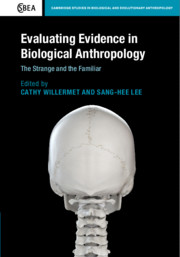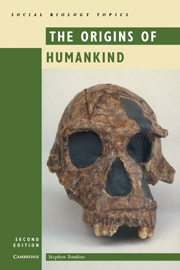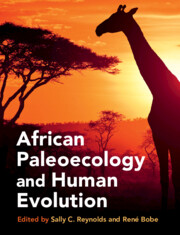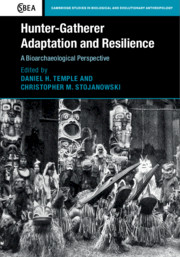Evaluating Evidence in Biological Anthropology
Biological anthropology is a diverse field, with countless research methods and techniques in different sub-disciplines. This book takes a critical perspective to the current state of the field, exploring theory and practice in paleoanthropology, bioarchaeology, and ecology. Contributors challenge how evidence is discovered, collected and interpreted, and explain that researchers gain insights by de-familiarizing themselves from well-known methods and taking a different perspective - 'making the familiar strange'. The book covers how researchers' biases and assumptions affect the interpretation of topics such as human evolution and population movements; race, health, and disability; bodies and embodiment; and landscapes and ecology. A final chapter includes a critical assessment of new thinking about technology, in addition to the multilayered and complex nature of both research questions and evidence. This is an insightful text for researchers and graduate students in anthropology, biology, ecology, history and philosophy of science.
- Broad coverage of sub-topics within biological anthropology makes this text appeal to a wide-ranging academic audience who are keen to question old theoretical assumptions
- Explores collaborative research that transcends traditional disciplinary boundaries, encouraging readers to develop their own multidisciplinary approaches
- Takes a critical look at the nature of evidence in biological anthropology, prompting readers to look at how their own evidence is discovered, collected, and interpreted
Reviews & endorsements
‘This edited volume critically examines how practitioners of biological anthropology apply methods, interpret evidence, and produce established knowledge … The opening five chapters are dedicated to theoretical and philosophical issues. Some themes have been discussed for decades, such as how women are portrayed in evolution and how popular science mischaracterizes human evolution, while others are newly emerging, such as the question of why insects are not eaten more widely on a global scale. The last five chapters present new approaches to data analysis and methods. These include contributions on disability and care in paleopathology, the osteological paradox in bioarchaeology, the incompleteness of fossil evidence, and the application of stable isotope studies for interpreting past environments.’ T. Harrison, Choice
Product details
November 2019Adobe eBook Reader
9781108754569
0 pages
24 b/w illus. 23 tables
This ISBN is for an eBook version which is distributed on our behalf by a third party.
Table of Contents
- Introduction: (re)discovery of the strange and the familiar: theory and methods for a twenty-first-century biological anthropology Sang-Hee Lee and Cathy Willermet
- Part I. The Strange and Familiar: New Landscapes and Theoretical Approaches:
- 1. Women in human evolution redux Dänae G. Khorasani and Sang-Hee Lee
- 2. Hegemony and the Central Asian Paleolithic record: perspectives on Pleistocene landscapes and morphological mosaicism Michelle M. Glantz
- 3. Anthropology now: how popular science (mis)characterizes human evolution Marc Kissel
- 4. The strangeness of not eating insects: the loss of an important food source in the United States Julie J. Lesnik
- 5. Methods without meaning: moving beyond body counts in research on behavior and health Robin G. Nelson
- Part II. (Re)discovery of Evidence: New Thinking About Data, Methods, and Fields:
- 6. (Re)discovering paleopathology: integrating individuals and populations in bioarchaeology Ann L. W. Stodder and Jennifer F. Byrnes
- 7. Parsing the paradox: examining heterogeneous frailty in bioarchaeological assemblages Sharon N. DeWitte
- 8. Seeing RED: a novel solution to a familiar categorical data problem Cathy Willermet, John Daniels, Heather J. H. Edgar and Joseph McKean
- 9. Paleoanthropology and analytical bias: citation practices, analytical choice, and prioritizing quality over quantity Adam P. Van Arsdale
- 10. (Re)discovering ancient hominin environments: how stable carbon isotopes of modern chimpanzee communities can inform paleoenvironment reconstruction Melanie M. Beasley and Margaret J. Schoeninger
- Discussion and conclusion: move forward, critically Cathy Willermet and Sang-Hee Lee.







